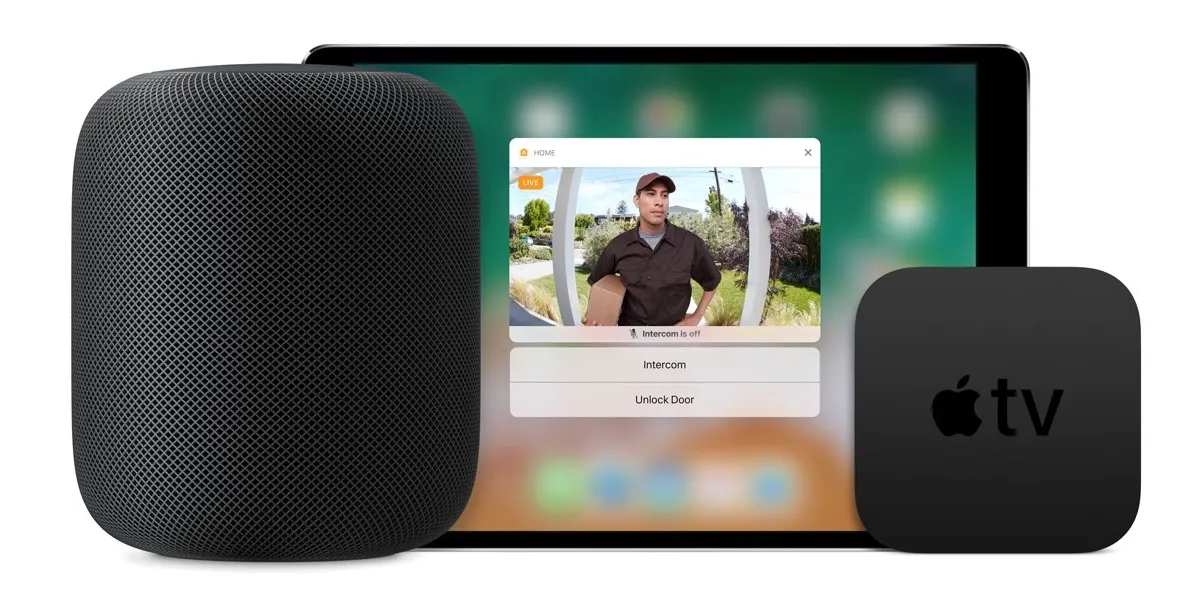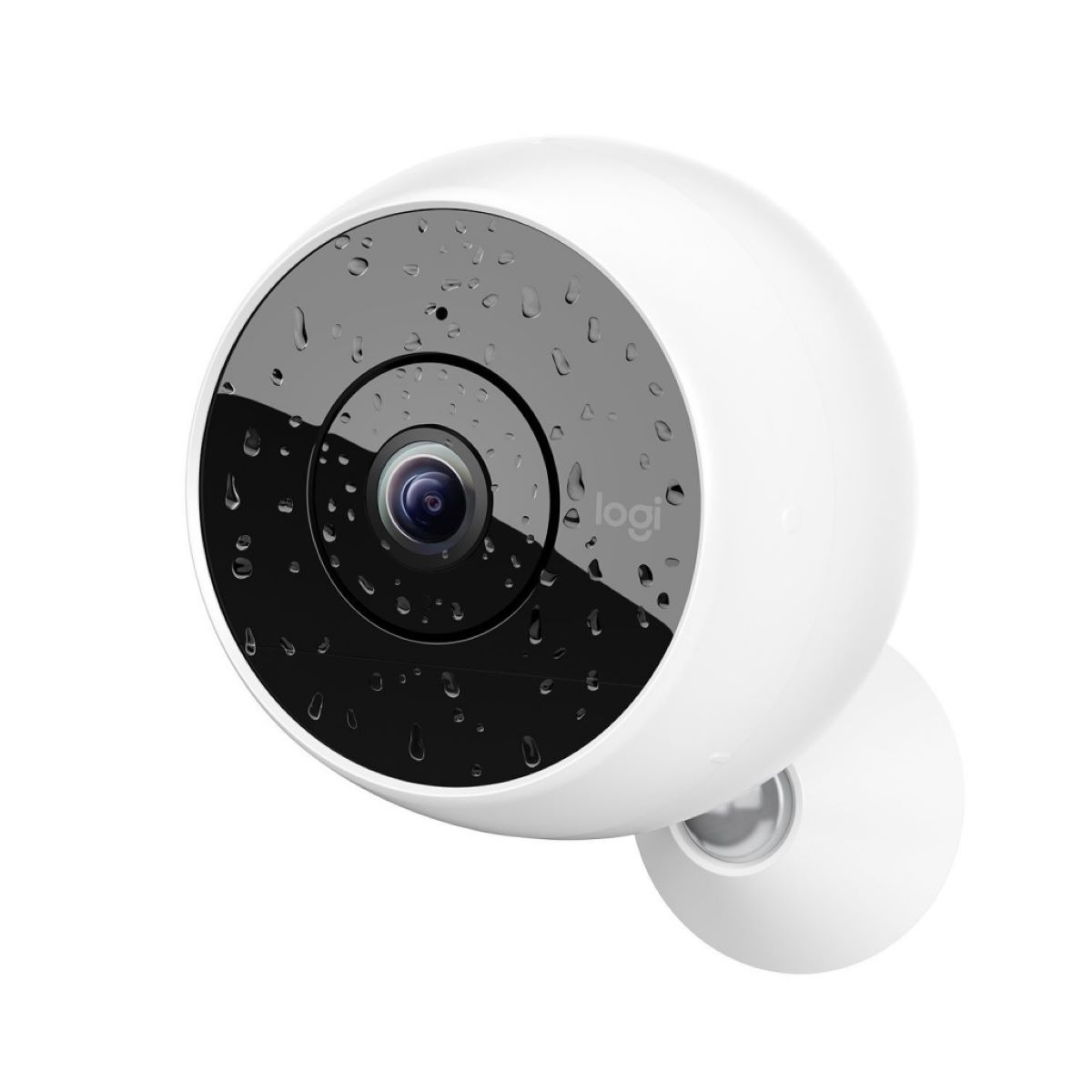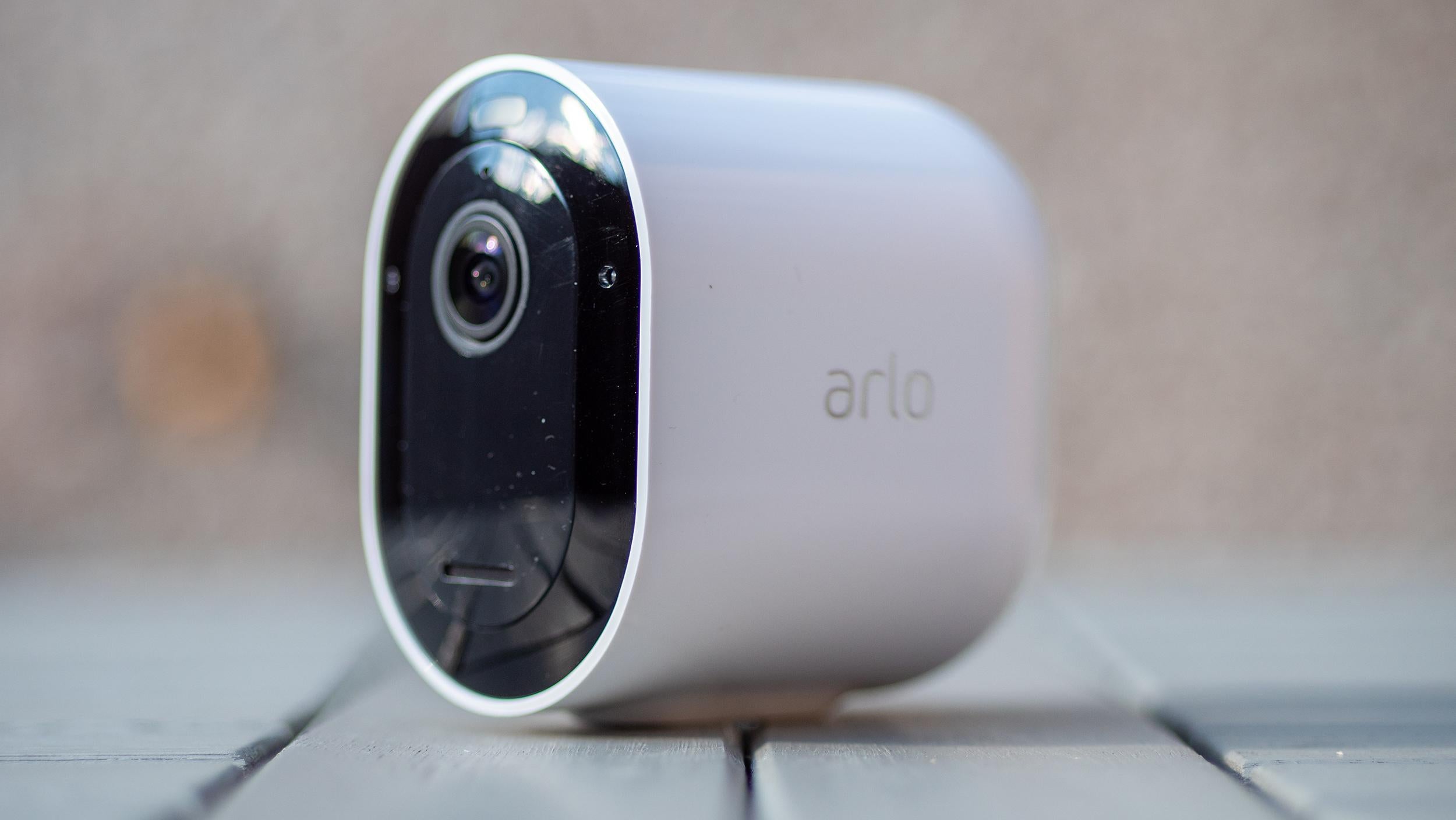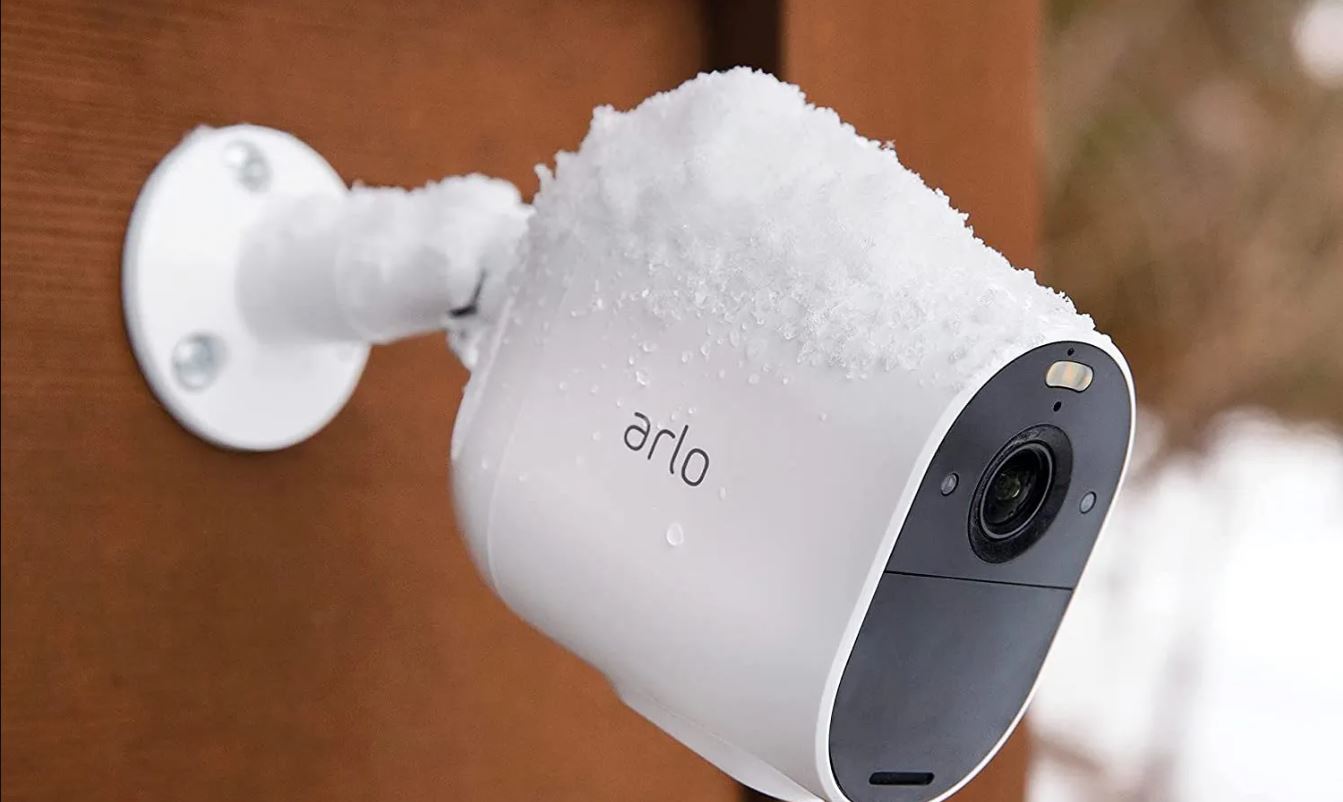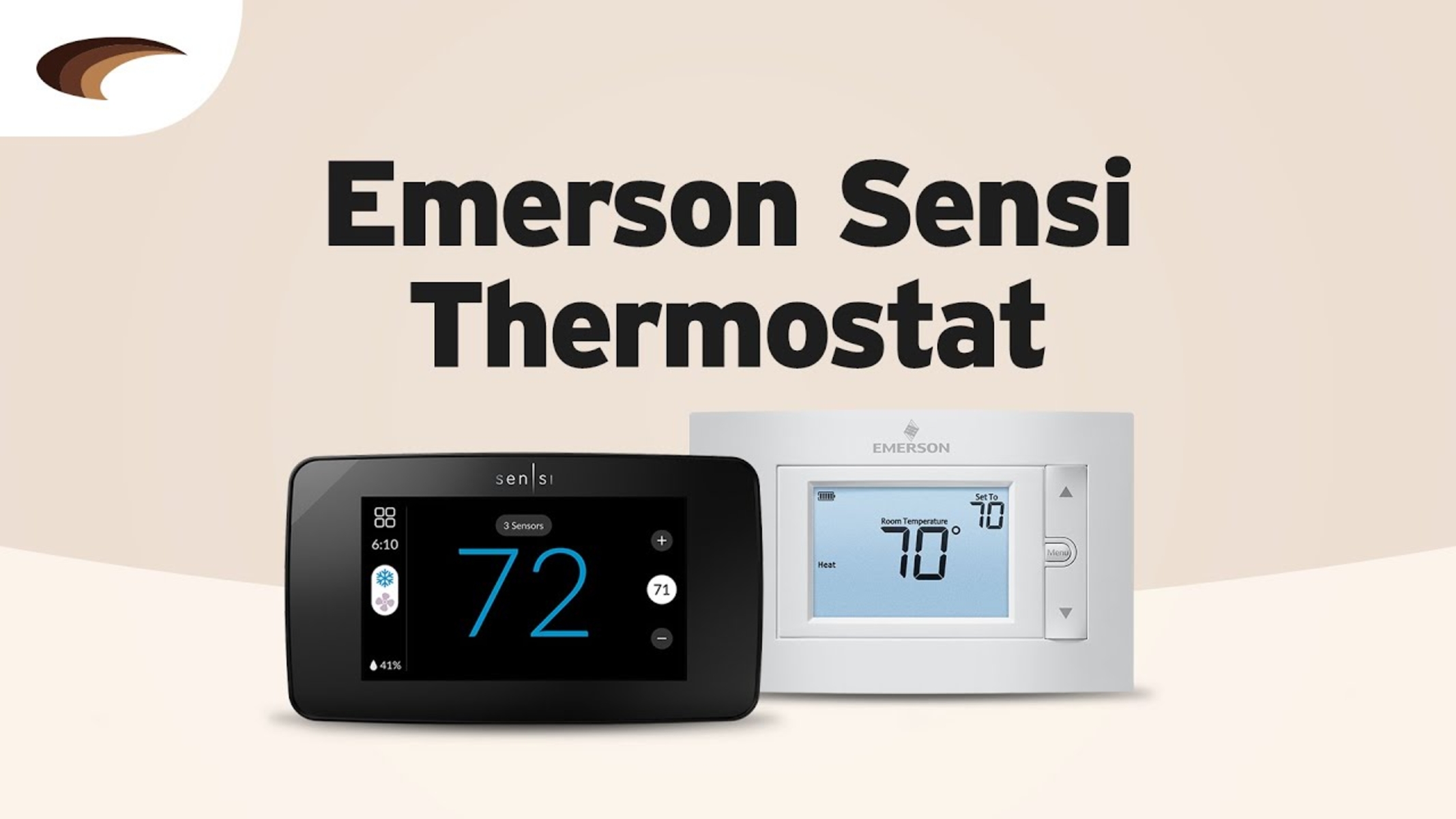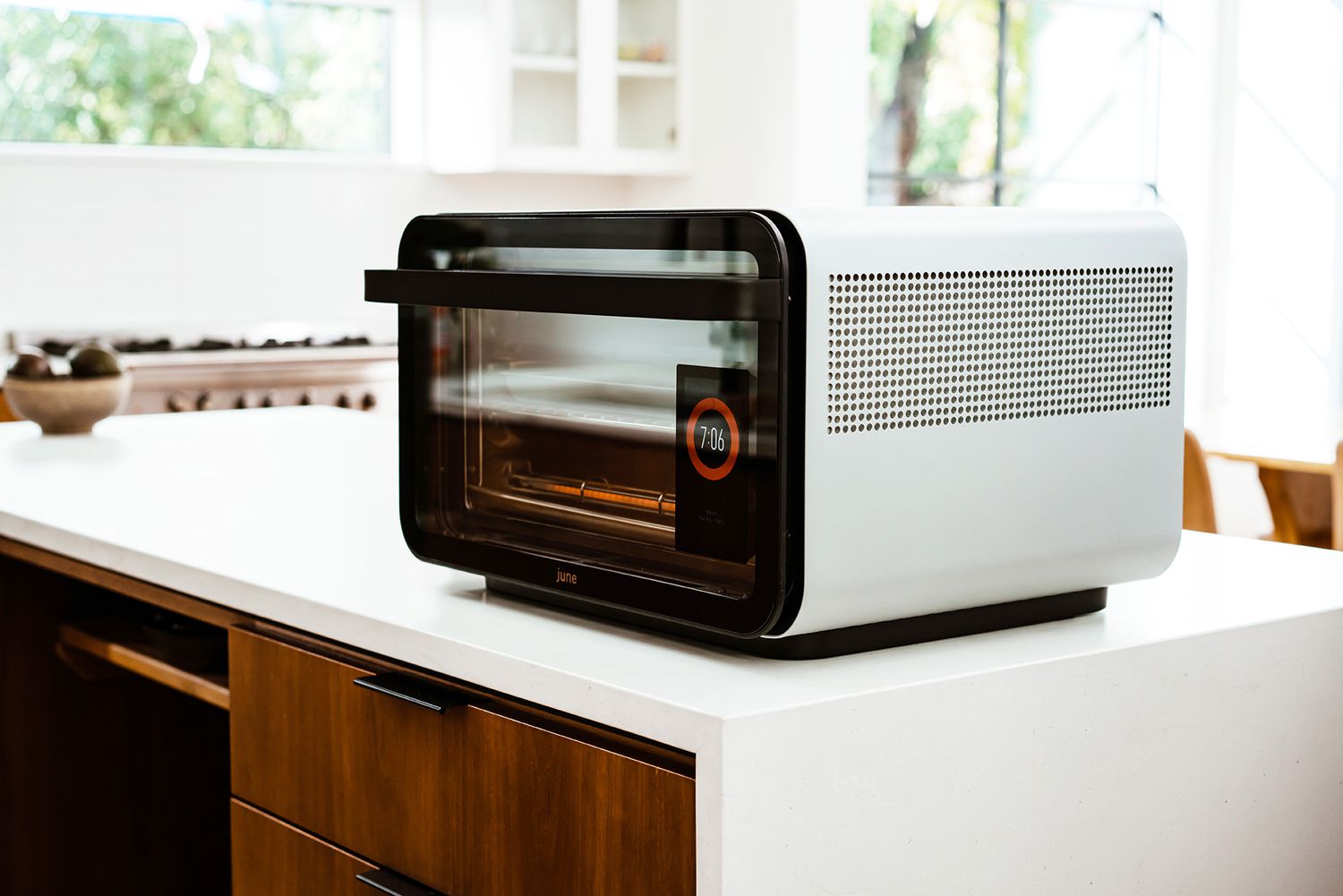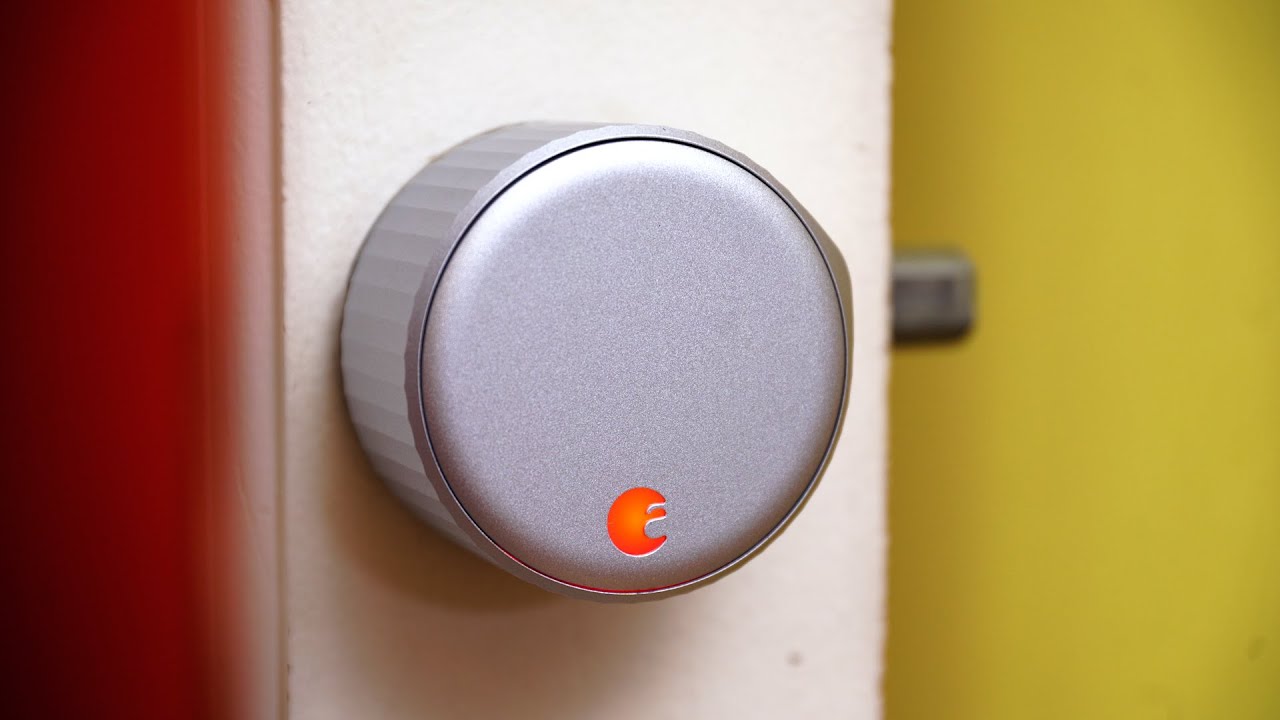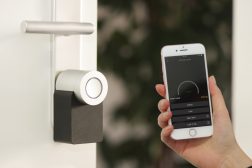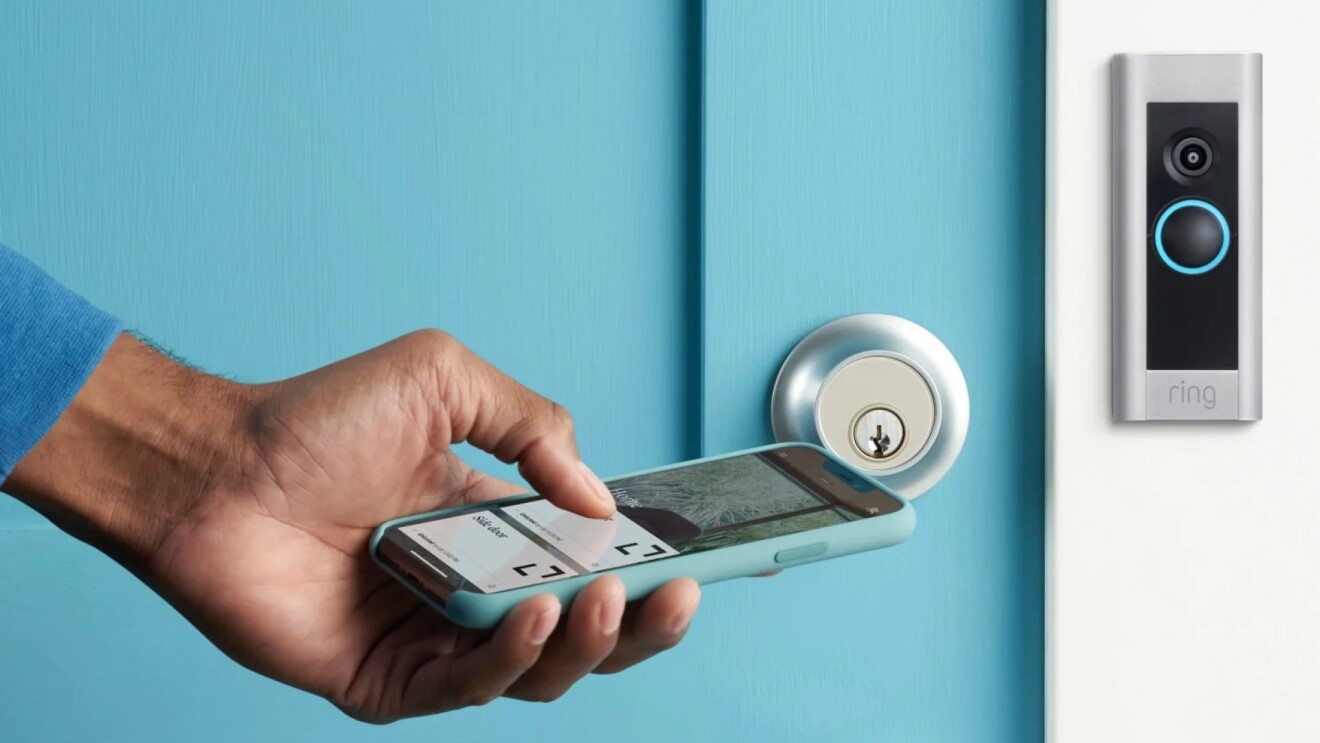Introduction
Welcome to the world of smart home technology, where convenience and security blend seamlessly. One of the most popular platforms in this realm is Apple HomeKit, a system that allows you to control various aspects of your home, including lighting, heating, and security, all from a single app on your Apple device. One of the key components of home security is a video doorbell, which provides you with the ability to see and communicate with visitors at your front door, even when you’re not home.
With the increasing popularity of Apple HomeKit, many homeowners are now wondering which video doorbells are compatible with this platform. Having a video doorbell that integrates with Apple HomeKit offers several advantages, such as seamless control and integration with other smart home devices, as well as enhanced security features.
In this article, we will explore the benefits of using Apple HomeKit compatible video doorbells, factors to consider when choosing one, a list of options that are compatible with Apple HomeKit, a comparison of features and prices, as well as installation tips and troubleshooting advice. By the end of this article, you will have a comprehensive understanding of the various video doorbell options available and how they can enhance your smart home experience.
What is Apple HomeKit?
Apple HomeKit is a smart home platform developed by Apple Inc. that enables homeowners to control and automate various aspects of their homes through compatible devices and applications. It is designed to provide a seamless integration between different smart home products, allowing users to control and monitor their connected devices using a single app on their Apple devices.
With Apple HomeKit, users can easily manage and control functions such as lighting, thermostats, door locks, cameras, and more, all from their iPhone, iPad, or Apple Watch. The platform utilizes a combination of Bluetooth, Wi-Fi, and Apple’s secure cloud infrastructure to ensure secure and reliable communication between devices.
One of the key features of Apple HomeKit is its emphasis on privacy and security. The platform utilizes end-to-end encryption, ensuring that all communication between devices is secure and protected from unauthorized access. Users can also specify which devices and services can access their home data, giving them complete control over their privacy.
In addition, Apple HomeKit supports advanced automation and voice control through Siri, Apple’s voice assistant. This means that users can create customized scenes and routines, where multiple devices can be activated or adjusted simultaneously with a single voice command or a tap on their Apple device. For example, users can create a “Goodnight” scene that turns off all lights, locks doors, and adjusts the thermostat to a comfortable sleeping temperature, all with a simple voice command.
Furthermore, Apple HomeKit is designed to work with a wide range of smart home devices from various manufacturers, ensuring compatibility and interoperability. This allows users to choose from a diverse selection of products according to their preferences and needs, while still enjoying a unified and synchronized user experience.
To set up and manage Apple HomeKit, users need an Apple device running iOS 8 or later, or an Apple TV, HomePod, or iPad configured as a home hub. The Home app, available on these devices, serves as the central control hub for all HomeKit-compatible devices, providing a user-friendly interface to manage and control their smart home.
Benefits of Using Apple HomeKit Compatible Video Doorbells
Integrating a video doorbell that is compatible with Apple HomeKit into your smart home ecosystem offers several advantages. Let’s explore some of the key benefits:
1. Seamless Integration: With an Apple HomeKit compatible video doorbell, you can effortlessly integrate it with your other smart home devices and control them all from a single app. This means that you can view and interact with your doorbell’s live feed, receive notifications, and customize settings conveniently alongside other devices such as smart lights, locks, and cameras.
2. Enhanced Security Features: Apple HomeKit compatible video doorbells provide enhanced security features to ensure the safety of your home. You can receive alerts and view the live video feed whenever someone is at your door, even if you’re not physically present. Additionally, some models offer features like facial recognition and activity zones, allowing you to personalize notifications and focus on specific areas of interest.
3. Remote Accessibility: Having an Apple HomeKit compatible video doorbell enables you to access its features from anywhere, as long as you have an internet connection. Whether you’re at work, on a vacation, or simply in another room of your home, you can view and communicate with visitors at your front door through your Apple device.
4. Integration with Voice Control: By using Siri, Apple’s voice assistant, you can control your video doorbell hands-free. You can ask Siri to show you the live feed from your doorbell, lock or unlock your door, or even dim your smart lights when a visitor is detected. This level of convenience and automation makes managing your video doorbell effortless and enhances your overall smart home experience.
5. Enhanced Privacy and Data Security: Apple’s commitment to privacy and security extends to HomeKit compatible devices, including video doorbells. With end-to-end encryption and secure communication protocols, you can have peace of mind knowing that your data is protected. Apple HomeKit also provides you with control over which devices and services can access your home data, giving you complete control over your privacy.
6. Expandability and Compatibility: Apple HomeKit is designed to work seamlessly with a wide range of smart home devices from various manufacturers. This means that you have the flexibility to choose from a variety of video doorbell options, ensuring compatibility and easy integration into your existing smart home setup. You can enjoy the benefits of Apple HomeKit while customizing your smart home experience to your liking.
By investing in an Apple HomeKit compatible video doorbell, you can elevate your home security, streamline your smart home management, and enjoy the convenience of easily integrating your doorbell with other smart devices in your home.
Factors to Consider when Choosing a Video Doorbell Compatible with Apple HomeKit
With a plethora of video doorbell options available, it’s important to consider several factors when choosing one that is compatible with Apple HomeKit. Here are some key factors to keep in mind:
1. Compatibility: The first and foremost factor to consider is compatibility with Apple HomeKit. Ensure that the video doorbell you choose explicitly states compatibility with Apple HomeKit in its specifications or packaging. This ensures seamless integration with your existing Apple HomeKit ecosystem and allows you to control and manage the doorbell using the Home app and Siri.
2. Video Quality: Pay attention to the video quality offered by the doorbell. Look for a doorbell that provides high-definition video resolution, ideally 1080p or higher. Crisp and clear video quality is crucial for accurately identifying and monitoring visitors at your door.
3. Field of View: Consider the field of view (FOV) of the video doorbell. A wider FOV allows for better coverage, enabling you to see a larger area around your front door. Look for doorbells with a FOV of at least 120 degrees to ensure optimal visibility.
4. Two-Way Audio: Check if the video doorbell has two-way audio functionality, which allows you to communicate with visitors in real-time. This feature enables you to instruct delivery personnel, greet guests, or even deter potential intruders, enhancing the convenience and security of your home.
5. Motion Detection: Look for video doorbells with advanced motion detection capabilities. Features such as customizable motion zones, sensitivity adjustment, and person detection can reduce false alarms and provide more accurate alerts when someone approaches your door.
6. Night Vision: Consider the night vision capabilities of the video doorbell. Look for infrared or other low-light technologies that allow the camera to capture clear video even in low-light conditions. This is essential for nighttime security and surveillance.
7. Power Options: Determine the power options that best suit your needs. Video doorbells can be battery-powered, hardwired, or a combination of both. Battery-powered options offer flexibility in terms of installation, while hardwired options provide uninterrupted power supply. Consider your preferences and existing wiring setup when selecting a power option.
8. Cloud Storage and Local Storage: Evaluate the storage options provided by the video doorbell. Some doorbells offer cloud storage, where video recordings are stored in the provider’s cloud servers for a fee. Others support local storage through an onboard memory card or a separate hub. Consider your storage requirements, budget, and privacy preferences when choosing a storage option.
9. Design and Aesthetics: Consider the design and aesthetics of the video doorbell, as it will be mounted near your front door. Look for a design that matches your home’s exterior and blends seamlessly with the existing architecture. Additionally, consider the size and dimensions of the doorbell to ensure it fits appropriately in the designated installation area.
10. Price and Brand Reputation: Lastly, consider the price range of the video doorbells you are considering and compare them based on features and customer reviews. Take into account the reputation and reliability of the brand, as well as any additional features or warranties offered.
By carefully considering these factors, you can select a video doorbell compatible with Apple HomeKit that meets your specific needs, enhances your smart home security, and seamlessly integrates with your existing smart home ecosystem.
List of Video Doorbells Compatible with Apple HomeKit
If you’re looking to integrate a video doorbell into your Apple HomeKit ecosystem, here is a list of some popular options that are compatible with Apple HomeKit:
- Ring Video Doorbell Pro: With its sleek design and advanced features, the Ring Video Doorbell Pro is a popular choice. It offers 1080p video resolution, a wide 160-degree field of view, two-way audio, and customizable motion detection. It also supports cloud storage for video recordings.
- Nest Hello: The Nest Hello video doorbell combines top-notch video quality with intelligent features. It offers 24/7 continuous video recording, HDR video, object and facial recognition, and integration with other Nest devices. The Nest Hello has a 160-degree field of view and two-way audio communication.
- Eufy Video Doorbell: Eufy’s video doorbell boasts a high-definition 2K resolution, allowing for crystal-clear video footage. It has AI-powered person detection, customizable motion zones, and local storage with no subscription fees. The Eufy Video Doorbell also offers reliable connectivity and a wide 160-degree field of view.
- August View Doorbell Cam: The August View Doorbell Cam offers a sleek design and impressive features. It has a resolution of 1440p, provides a wide 180-degree field of view, and supports two-way audio communication. The doorbell integrates well with August smart locks and other August devices.
- Arlo Video Doorbell: The Arlo Video Doorbell features a 180-degree diagonal field of view and HDR video quality. It offers advanced motion detection with package detection capabilities, two-way audio, and cloud storage for video recordings. The doorbell also supports integration with other Arlo devices.
These video doorbells provide a range of features to suit different preferences and needs. Remember to verify the compatibility with Apple HomeKit and ensure that they meet your specific requirements before making a final decision.
Comparison of Features and Prices
When choosing a video doorbell compatible with Apple HomeKit, it’s important to compare the features and prices of different options to find the one that best suits your needs. Here is a comparison of some key features and price ranges for the video doorbells mentioned:
– Ring Video Doorbell Pro: The Ring Video Doorbell Pro offers 1080p video resolution, a wide 160-degree field of view, two-way audio, and customizable motion detection. It includes advanced features such as customizable motion zones and the ability to set up activity zones. The Ring Video Doorbell Pro comes in at a price range of $$$$.
– Nest Hello: The Nest Hello provides 24/7 continuous video recording, HDR video, object and facial recognition, and integration with other Nest devices. It offers a 160-degree field of view and two-way audio communication. The Nest Hello is priced at $$$.
– Eufy Video Doorbell: The Eufy Video Doorbell features a high-definition 2K resolution for clear video footage. It has AI-powered person detection, customizable motion zones, and local storage with no subscription fees. The Eufy Video Doorbell falls within a price range of $$.
– August View Doorbell Cam: The August View Doorbell Cam offers a resolution of 1440p and provides a wide 180-degree field of view. It supports two-way audio communication and integrates well with August smart locks and other August devices. The August View Doorbell Cam is priced at $$.
– Arlo Video Doorbell: The Arlo Video Doorbell features a 180-degree diagonal field of view and HDR video quality. It offers advanced motion detection with package detection capabilities and cloud storage for video recordings. The Arlo Video Doorbell falls within a price range of $$$.
When comparing the features, consider factors such as video quality, field of view, two-way audio capabilities, motion detection features, storage options, and integration with other smart home devices. Additionally, take into account the price range that fits your budget.
It’s important to note that prices and features may vary over time, and it’s always a good idea to check the manufacturer’s website or authorized retailers for the most up-to-date information.
By comparing the features and prices of these video doorbells compatible with Apple HomeKit, you can make an informed decision and choose the one that best meets your requirements, while staying within your budget.
Installation and Set-up Process for Apple HomeKit Compatible Video Doorbells
Setting up an Apple HomeKit compatible video doorbell requires a few steps to ensure seamless integration into your smart home ecosystem. While the specific process may vary slightly depending on the brand and model of the doorbell, here is a general guide to help you get started:
- Check Compatibility: Before purchasing a video doorbell, verify that it is explicitly listed as compatible with Apple HomeKit. This information can usually be found on the manufacturer’s website or product packaging.
- Prepare the Necessary Equipment: To install the video doorbell, gather the necessary tools such as a screwdriver, drill, mounting bracket, and any additional hardware included in the package.
- Power Off and Disconnect Existing Doorbell: If you have an existing doorbell, locate the power source and turn off the power. Remove the existing doorbell unit and disconnect any wires connected to it.
- Mounting the Video Doorbell: Follow the manufacturer’s instructions for mounting the video doorbell. Typically, this involves attaching the mounting bracket to the desired location near the front door using screws and anchors, if necessary.
- Wiring and Connection: Carefully connect the wiring provided with the video doorbell to your home’s existing doorbell wiring, following the manufacturer’s instructions. This step may vary depending on the power options (battery-powered or hardwired) of the specific video doorbell.
- Download the Manufacturer’s App: Download the manufacturer’s app for the video doorbell onto your Apple device from the App Store. This app will guide you through the remainder of the set-up process.
- Create an Account and Follow App Instructions: Open the app and create an account if prompted. Then, follow the app’s instructions to connect the video doorbell to your home Wi-Fi network. This step typically involves scanning a QR code or entering the serial number of the doorbell.
- Connect to Apple HomeKit: Once the video doorbell is successfully connected to the manufacturer’s app, open the Home app on your Apple device and follow the instructions to add the doorbell to your Apple HomeKit ecosystem. This usually involves scanning a QR code or entering a pairing code.
- Customize Settings: Within the Home app, you can personalize the settings for your video doorbell, such as adjusting motion detection sensitivity, creating automation routines, and setting up notifications.
- Test and Optimize Performance: After completing the set-up process, test the functionality of the video doorbell. Ensure that live video streaming, two-way audio, and motion detection are working as expected. Make any necessary adjustments to optimize performance.
Always refer to the manufacturer’s specific installation and set-up instructions provided with your video doorbell for the most accurate and detailed guidance. If you encounter any challenges or difficulties, reach out to the manufacturer’s support team for assistance.
By following these steps, you can successfully install and set up your Apple HomeKit compatible video doorbell, providing you with enhanced security and convenience at your front door.
Tips for Maximizing the Use of a Video Doorbell with Apple HomeKit
Once you have installed your video doorbell and integrated it into your Apple HomeKit ecosystem, here are some helpful tips to maximize its functionality and enhance your overall smart home experience:
1. Optimize Placement: Position your video doorbell at an optimal location to capture the best possible view of your front door and surrounding areas. Ensure that the doorbell is securely mounted and angled for maximum coverage. Consider factors such as visibility, minimizing obstructions, and avoiding direct sunlight that may affect image quality.
2. Set Up Motion Zones: Take advantage of the motion zone settings provided by your video doorbell. By customizing motion detection zones, you can reduce false alarms and receive notifications only for specific areas of interest, such as your porch or driveway. This allows you to focus on important events and filter out unnecessary alerts.
3. Create Automation Routines: Utilize the automation features of Apple HomeKit to create personalized routines and scenes involving your video doorbell. For example, you can set up a routine that triggers your porch lights to turn on when motion is detected or binds the doorbell’s actions with other smart home devices for a seamless experience.
4. Enable Facial Recognition: If your video doorbell supports facial recognition, configure this feature within the manufacturer’s app or the Home app. By teaching your doorbell to recognize familiar faces, you can receive more specific alerts and create tailored actions based on individuals who approach your door.
5. Integrate with other Smart Devices: Explore the possibilities of integrating your video doorbell with other smart home devices. For instance, when someone rings the doorbell, you can have your smart lights flash or your smart speaker announce a custom message. Integration allows for a more cohesive and interconnected smart home experience.
6. Regularly Update Firmware: Keep your video doorbell’s firmware up to date to ensure optimal performance and access to the latest features and security enhancements. Manufacturers regularly release firmware updates for their devices, which can be obtained through the manufacturer’s app or their website.
7. Fine-tune Motion Detection Settings: Pay attention to the sensitivity and other motion detection settings of your video doorbell. Adjust these settings based on your specific needs and the environment around your front door. Fine-tuning these settings can help minimize false alarms and improve the accuracy of motion detection.
8. Use Multiple User Access: Take advantage of the multi-user access feature available in Apple HomeKit. Grant access to other family members or trusted individuals, allowing them to receive notifications and access the video feed from the doorbell. This ensures that everyone in the household is informed and can monitor incoming visitors.
9. Regular Maintenance: Perform routine maintenance on your video doorbell, such as cleaning the camera lens, checking the power source, and inspecting the wiring connections. Regular maintenance helps maintain optimal performance and ensures that your video doorbell continues to operate reliably over time.
10. Explore Third-Party Apps and Integrations: Consider exploring third-party apps and integrations that offer additional features and functionality for your video doorbell. Some apps may provide advanced video analytics, cloud storage options, or integration with other smart home platforms, expanding the capabilities of your video doorbell.
By following these tips, you can maximize the functionality and utility of your video doorbell within your Apple HomeKit ecosystem, enhancing both the security and convenience of your smart home.
Common Issues and Troubleshooting for Apple HomeKit Compatible Video Doorbells
While video doorbells compatible with Apple HomeKit are designed to provide a seamless and reliable experience, you may occasionally encounter some issues. Here are some common problems you may come across and troubleshooting steps to resolve them:
1. Connection Issues: If you experience connection problems between your video doorbell and Apple HomeKit, check the following:
– Ensure that your video doorbell and Apple device are connected to the same Wi-Fi network.
– Verify that your Apple device and video doorbell have the latest firmware updates installed.
– Restart your video doorbell and Apple device to refresh the connection.
– Check if there are any physical or wireless obstacles interfering with the signal.
– Reset the connection between your video doorbell and Apple HomeKit by removing and re-adding the device within the Home app.
2. Video Quality Problems: If you notice poor video quality or choppy video playback, try the following troubleshooting steps:
– Ensure that your video doorbell’s camera lens is clean and free from any dust or debris.
– Check the internet connection of your video doorbell and Wi-Fi signal strength in the area.
– Verify that your internet bandwidth is sufficient to support high-quality video streaming.
– Restart your video doorbell and Apple device to refresh the connection.
– Consider adjusting the video resolution settings in the manufacturer’s app to optimize the quality and bandwidth usage.
3. Notification Issues: If you encounter problems with receiving notifications from your video doorbell, consider the following steps:
– Double-check that notifications are properly configured within the manufacturer’s app and the Home app.
– Ensure that notification settings on your Apple device are not blocking alerts from the video doorbell.
– Verify that your Apple device is connected to a stable internet connection and has sufficient battery life.
– Ensure that your video doorbell’s motion detection settings and zones are properly configured.
– Restart your video doorbell, Apple device, or both to refresh the connection and settings.
4. Power and Battery Problems: If you have a battery-powered video doorbell, you may encounter power-related issues. Address them using the following troubleshooting steps:
– Check the battery level in the manufacturer’s app to ensure it is not critically low.
– Follow the instructions provided by the manufacturer to recharge or replace the battery as needed.
– Verify that the charging cable and power source are functioning correctly.
– If using a hardwired video doorbell, confirm that the wiring connections are secure and providing sufficient power.
5. Device Compatibility: In some cases, you may experience compatibility issues between your video doorbell and other smart home devices. Consider the following steps:
– Check if all your smart home devices and the video doorbell are updated to the latest firmware or software versions.
– Verify that all devices are explicitly listed as compatible with Apple HomeKit.
– Reset and re-add the devices within the Home app to establish a fresh connection.
6. Resetting the Video Doorbell: If you are facing persistent issues, you may need to reset your video doorbell back to its factory settings. Consult the manufacturer’s instructions for the specific reset process, as it may vary depending on the brand and model.
If the troubleshooting steps mentioned above do not resolve the issues you are experiencing, reach out to the manufacturer’s support team for further assistance. They can provide more specific guidance or offer solutions tailored to your video doorbell model.
Remember, while issues may arise, most problems can be resolved by following these troubleshooting steps, ensuring that you can continue to enjoy the benefits of your Apple HomeKit compatible video doorbell.
Conclusion
Apple HomeKit compatible video doorbells offer a seamless integration into your smart home ecosystem and provide enhanced security and convenience at your front door. With the ability to control and monitor your video doorbell through the Apple Home app and Siri voice commands, you can easily stay connected and in control, no matter where you are.
In this article, we explored the benefits of using video doorbells compatible with Apple HomeKit, including seamless integration, enhanced security features, remote accessibility, and integration with voice control. We also discussed factors to consider when choosing a video doorbell, such as compatibility, video quality, field of view, and power options.
We provided a list of popular video doorbells compatible with Apple HomeKit, along with a comparison of their features and price ranges. Additionally, we discussed the installation and set-up process, offering a general guide to help you get started. We also provided tips for maximizing the use of your video doorbell within the Apple HomeKit ecosystem, as well as troubleshooting steps for common issues.
Remember to always refer to the manufacturer’s instructions and guidelines for specific setup and troubleshooting information related to your video doorbell model. If you encounter any difficulties, reach out to the manufacturer’s support team for assistance.
With the integration of an Apple HomeKit compatible video doorbell, you can elevate the security and convenience of your smart home. Whether you’re monitoring visitors, receiving package deliveries, or enhancing the overall functionality of your smart home, a video doorbell with Apple HomeKit compatibility is a valuable addition to your home security system.
Explore the options available, consider your specific needs and preferences, and enjoy the benefits of seamless integration and enhanced control with an Apple HomeKit compatible video doorbell.







